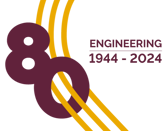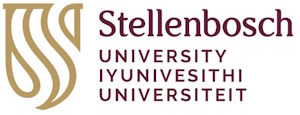
[Article by Nane Zietsman]
Earth Day is a global initiative that takes place on the 22nd of April every year. It is viewed as a day of action to change human behaviour and create worldwide awareness regarding climate change. This year the Faculty of Engineering at Stellenbosch University joined the movement by participating in an event aimed at learners from the Generation and Sakhikamva school groups. The event was organised by Astrofica and forms part of the global ExoLab Programme.
The online and in-person event, hosted at Saldanha Airfield in Saldanha Bay, was attended by a total of 300 learners. The highlight of the day was the much-anticipated launch of four High-altitude Balloon (HAB) payloads. The Faculty’s Department of Electrical and Electronic Engineering (E&E) partnered with Astrofica to provide this launch service. According to Dr Visagie, senior lecturer (E&E), the department assisted in safeguarding the reliable launch of the balloons and arranged for flight permission. Dr Visagie, accompanied by Dr Willem Jordaan and two masters’ students, Sam Jeffery and Andries Burger, further tracked the payloads – one was located on land and three at sea. The team did not anticipate that the payloads will land in the ocean and eventually, after some phone calls, they were able to get access to a boat for the retrieval mission.
They also visited the Generation Sandown campus to give a brief introductory lecture on the balloon project. “The ideas for the experiments that were launched all came from the learners. They included carbon dioxide sensors and data logging, investigating effects of the balloon flight on a succulent plant, and investigating oxidation on a bar of metal. There were also a few more exotic ideas, such as an attempt to make ice cream in a bag during the flight.” Dr Visagie regards the project as hugely successful stating that the learners eagerly participated and that both school groups gained valuable knowledge.
The High-altitude Balloon activities started at the Department of Electrical and Electronic Engineering in 2017 as an alternative test platform option for pseudo-satellite projects since access to small rockets is mostly limited and requires special launch facilities. Dr Visagie, Dr Jordaan and Dr Arno Barnard, all senior lecturers involved in space and satellite research activities, encouraged students to research topics involving a payload being tested in a balloon flight for their final-year projects. These projects typically take 6 months to complete, and the Department would launch students’ completed projects around October, in time for them to collect the results and include them in their final reports. “We’ve repeated this process every year since 2017. Some of these final year students went on to obtain PhD degrees in satellite engineering as a result of their exposure to the field.” – Dr Visagie.
As stated by Dr Visagie, the benefit of a balloon launch as a test flight is that students get some experience in designing a payload for conditions that are representative of space. “The single launch towards the end of their projects forces students to assume a Systems Engineering approach, whereby they design their experiments for the launch and have to consider things like autonomy, data collection, and testing from the start of their projects.” Hydrogen gas is used to inflate the balloons and the balloons themselves are made from Latex. An inflated balloon can easily span about 2m at ground level. “The student experiments are usually suspended in a Styrofoam box hanging from the balloon. The balloon flight involves launching the balloon and tracking its trajectory.” Once the balloon bursts, the payload box falls back to Earth. The box usually contains valuable electronic components, and also the data that the students need to prove that their experiments were successful. Dr Visagie comments that it is especially important that the payload box is recovered in time. This is achieved through in-house developed tracking electronics that are included in the payload box as standard.
The Department has become well experienced at launching HAB’s. Apart from the tracking and recovery of payloads, a few administrative tasks are involved, such as applying for flexible use of airspace (FUA), which grants permission and ensures coordination with Cape Town international airport and other local airfields. As stated by Dr Visagie, this experience, together with the educational impact of such a balloon launch, has led the Department to offer the balloon launch as a service to external organisations. In March 2021 the Department launched three balloons for Astrofica Technologies as part of their intern training programme. This was the first time that the experiments were not provided by the Department’s students, but rather by the interns that Astrofica, a local satellite service provider, was training. According to Dr Visagie, the project was so successful that the Department is now partnering with Astrofica to provide the service to schools as well. The Earth Day experiment counts as one of many exciting projects that the partnership forestalls.
The Department will continue to launch balloons every year for their final-year projects, but they also anticipate that the newly launched schools project will continue and expand. “Both the Generations and Sakhikamva group of schools have expressed the desire to continue with the project and Generation plans to start a space academy programme for their learners which will include a balloon launch in the curriculum.” The Department welcomes any interest in the project and will gladly assist other groups and organisations to launch HAB’s successfully.
Photograph: Pupils from Claremont High and Panorama Primary waiting in anticipation for the HAB to be launched by Dr Willem Jordaan (left) and Sam Jeffery (right).
Photo credit: Liquid Lingo Communications



